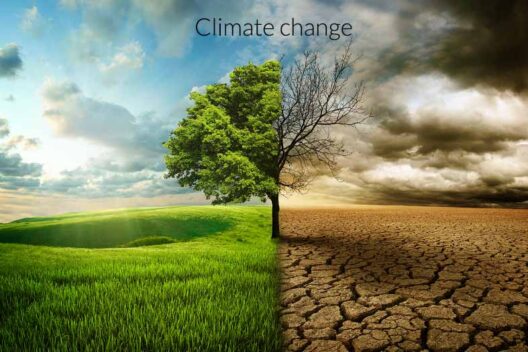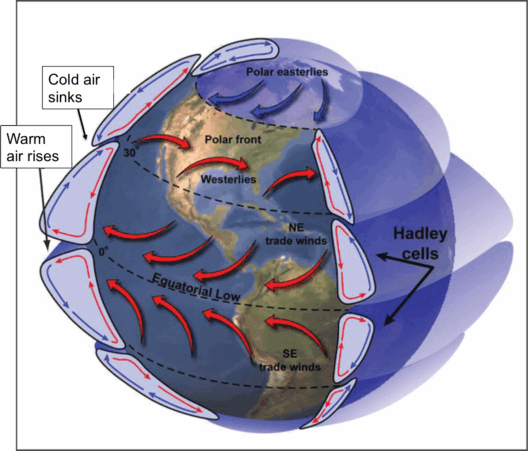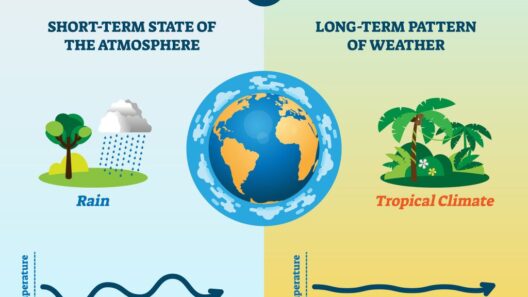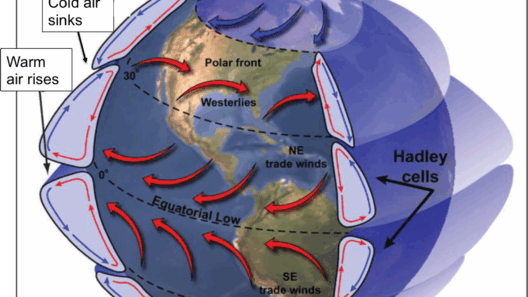Understanding the Earth’s climate zones is an essential pursuit for anyone curious about the intricacies of our planet’s ecosystem. A climate zone is defined primarily by its temperature, precipitation patterns, and overall weather characteristics. These factors create distinguishable regions around the globe that are crucial not only for geographical studies but also for understanding biodiversity, agriculture, and even human migration patterns.
The Earth’s climate zones can broadly be categorized into five main types: tropical, arid, temperate, polar, and highland. Each of these zones exhibits unique characteristics worthy of exploration. To appreciate the delicate interplay of elements affecting these regions, we must delve deeper into their specific traits.
Tropical Climate Zone
The tropical climate zone spans the equatorial region, typically located between the Tropic of Cancer and the Tropic of Capricorn. It is renowned for its warm temperatures and abundant rainfall. This perennial warmth extends throughout the year, with minimal temperature variation. Rainfall is not just frequent; it is often intense, resulting in lush, verdant ecosystems, including rainforests that are home to a staggering diversity of flora and fauna.
The tropical zone can be further divided into two distinct categories: tropical rainforest and tropical savanna. The rainforests, characterized by their dense canopies, house countless species, many of which have yet to be discovered. Conversely, the savanna regions feature more pronounced dry seasons, leading to a unique blend of grasslands interspersed with shrubs and scattered trees. This diversity within the tropical climate illustrates the ecological richness born from its climatic conditions.
Arid Climate Zone
In stark contrast to the humid tropics, arid climate zones embody dryness and scarcity. Typically found in deserts and semi-arid regions, these areas experience minimal precipitation, often less than 10 inches annually. The most notable arid regions include the Sahara, Mojave, and Arabian deserts. Despite their perceived barrenness, dry climate zones showcase a remarkable ability to sustain life.
The inhabitants of arid regions have adapted to exploit scarce water resources, with plants like cacti and xerophytes evolving specialized mechanisms to store moisture. Animals here often exhibit nocturnal behaviors—active during cooler night hours to mitigate heat exposure. This intricate balance of life in seemingly inhospitable conditions provides insight into nature’s resilience and adaptability.
Temperate Climate Zone
The temperate climate zone bridges the extremes of the tropics and polar regions, offering a comfortable, transitional climate that is characterized by four distinct seasons: winter, spring, summer, and autumn. This zone can be divided into two subdivisions: maritime and continental. Maritime temperate zones enjoy mild temperatures and ample rainfall due to proximity to oceans, while continental temperate zones experience more extreme temperature fluctuations and varied precipitation patterns.
Regions within this zone are often prized for their agricultural productivity, owing to nutrient-rich soils and favorable growing conditions. The diversity of temperature and moisture results in a wide array of ecosystems, including deciduous forests, grasslands, and temperate rainforests. The balance of these elements not only sustains varied wildlife but also supports human agriculture and settlement.
Polar Climate Zone
Polar climate zones are located at the Earth’s extremes—near the North and South poles. Characterized by frigid temperatures and permanent ice cover, these areas pose unique challenges to life. The polar regions have an average temperature that rarely exceeds freezing, resulting in minimal plant and animal biomass.
Despite the harsh conditions, life manages to persist. The polar ecosystem includes unique adaptations, such as the thick fur of polar bears and the blubber of seals, both essential for insulation against the bitter cold. As global temperatures rise, melting polar ice serves as a vivid reminder of climate change, prompting critical discussions about environmental stewardship.
Highland Climate Zone
Highland climate zones emerge in elevated regions, such as mountains and high plateaus, and can encompass aspects of all other climate zones due to their varied altitudes and microclimates. The rapid changes in elevation create distinct habitats that can support an array of ecosystems, from lush temperate forests at lower altitudes to barren alpine tundra at higher elevations.
These high-altitude environments serve as critical indicators of climate change, as they respond sensitively to shifts in temperature and precipitation. Additionally, they often provide vital resources, such as freshwater reservoirs, to surrounding communities. The mountainous terrains encourage exploration and curiosity, fostering a deeper appreciation of ecological diversity.
In conclusion, the concept of climate zones transcends mere geographical classification; it reflects the complexity of Earth’s systems and encourages a profound understanding of sustainability and conservation. Each climate zone contributes uniquely to the Earth’s tapestry, influencing biomes, human livelihoods, and global weather patterns. As we continue to grapple with climate change, recognizing and appreciating these diverse environments may be pivotal in fostering a more sustainable future for our planet.






